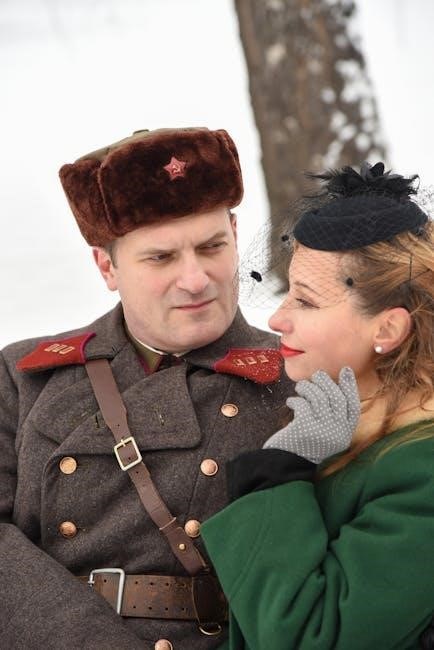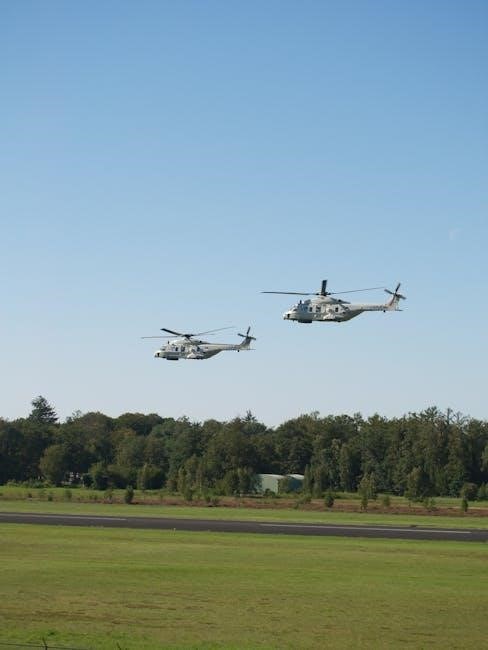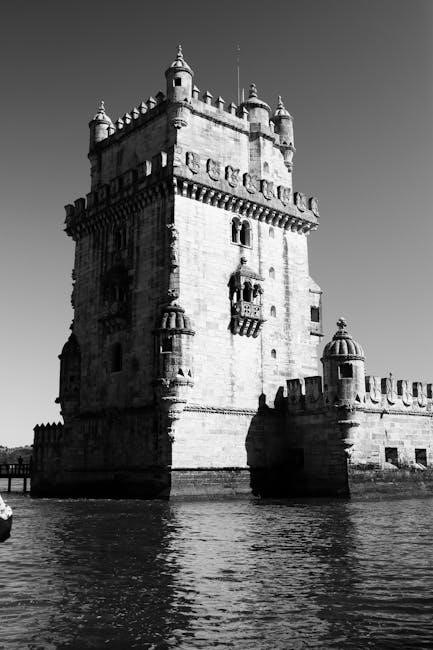Russian military helicopters have long been a cornerstone of national defense and strategic operations. With a rich history of innovation and a focus on modernization, these aircraft play a critical role in ensuring national security. As we look ahead to 2024, the evolution of Russian military helicopters continues to reflect advancements in technology and adaptability to emerging threats; This article explores the historical context, current fleet composition, and ongoing modernization efforts, providing a comprehensive overview of Russia’s military helicopter capabilities and their significance in the modern era.

Russian Military Helicopters: An Overview
Russia’s military helicopter fleet is renowned for its versatility, firepower, and adaptability to diverse combat environments. The fleet encompasses a wide range of models, including the iconic Mi-24 attack helicopter, the Mi-28 “Night Hunter,” and the Ka-52 “Alligator.” These aircraft are designed to perform missions such as ground attack, reconnaissance, transport, and medical evacuation. Equipped with advanced weaponry and avionics, Russian military helicopters are integral to modern warfare, providing close air support and ensuring battlefield dominance. Their reliability and robust design make them a critical asset in maintaining national security and projecting power in various regions.
2.1. Historical Context
The history of Russian military helicopters is deeply intertwined with the Soviet Union’s industrial and military ambitions. Emerging in the mid-20th century, helicopters quickly became a vital component of Soviet military doctrine, offering unparalleled mobility and versatility on the battlefield. The development of these aircraft was driven by the need to counter Western military advancements during the Cold War, as well as to address the unique challenges of Russia’s vast and diverse terrain.
The Soviet Union’s helicopter industry flourished under the guidance of legendary designers like Mikhail Mil and Nikolai Kamov. Their innovative designs laid the foundation for iconic models such as the Mi-24 “Hind” and the Ka-50 “Black Shark.” These helicopters were not only advanced for their time but also reflected the Soviet emphasis on heavy armor, firepower, and reliability. The Mi-24, for instance, became the world’s first attack helicopter, combining the roles of gunship and troop transport in a single platform.
Throughout the Cold War, Russian military helicopters were central to Soviet military strategy, particularly in scenarios involving armored warfare and counterinsurgency. They were deployed extensively during the Soviet-Afghan War, where their durability and adaptability proved invaluable in harsh, mountainous terrain. These operational experiences shaped the evolution of Russian helicopter design, with a focus on enhancing survivability, maneuverability, and multi-role capabilities.
The collapse of the Soviet Union in 1991 marked a turning point for the Russian helicopter industry. Despite economic challenges, the sector managed to preserve its expertise and continue developing cutting-edge technology. The post-Soviet era saw the introduction of advanced models like the Mi-28 “Night Hunter” and the Ka-52 “Alligator,” which incorporated modern avionics, stealth features, and precision weaponry. These helicopters were designed to meet the demands of modern warfare, including urban combat and asymmetric conflicts.
Today, Russian military helicopters remain a cornerstone of the nation’s defense strategy. Their historical development reflects a blend of innovation, practicality, and strategic foresight. As Russia continues to modernize its military, the legacy of Soviet-era designs serves as a foundation for future advancements, ensuring that Russian helicopters remain competitive on the global stage;
2.2. Current Fleet Composition
Russia’s military helicopter fleet in 2024 represents a sophisticated blend of legacy systems and modern, cutting-edge platforms. The fleet is optimized for a wide range of missions, including attack, reconnaissance, transport, and medical evacuation. Its composition reflects the strategic priorities of the Russian military, with a strong emphasis on versatility, survivability, and operational readiness. The fleet’s current structure is a testament to decades of investment in helicopter design and manufacturing, ensuring Russia’s ability to project power across its vast territories and beyond.
The backbone of Russia’s attack helicopter fleet remains the Mi-24 “Hind” and its variants. Despite being introduced in the 1970s, the Mi-24 has undergone numerous upgrades, allowing it to remain relevant in modern combat scenarios. Its combination of heavy firepower, armor, and troop-carrying capacity makes it a versatile asset for ground support and counterinsurgency missions. The Mi-24 is complemented by newer platforms like the Mi-28 “Night Hunter” and the Ka-52 “Alligator,” which boast advanced avionics, stealth features, and precision-guided weaponry. These helicopters are designed to dominate the battlefield in both day and night conditions, leveraging their superior sensors and firepower to neutralize enemy forces.
The transport helicopter fleet is dominated by the Mi-8 “Hip” and its upgraded variants, such as the Mi-8AMT “Terminator.” These helicopters are workhorses of the Russian military, providing critical airlift capabilities for troops, equipment, and supplies. Their reliability and endurance make them indispensable for operations in remote and hostile environments. Additionally, the Mi-26 “Halo,” the world’s largest and most powerful helicopter, remains in service, offering unparalleled heavy-lift capabilities for strategic transport and disaster relief missions.
Russia’s reconnaissance and scout helicopter fleet includes the Ka-50 “Black Shark” and the Ka-52 “Alligator,” both of which are designed for high-speed, low-altitude operations. Equipped with advanced sensors and missile systems, these platforms excel in reconnaissance, target acquisition, and precision strikes. The Ka-50, in particular, is noted for its unique coaxial rotor design, which enhances maneuverability and reduces its radar cross-section, making it a formidable asset in contested airspace.
The current fleet also includes specialized helicopters for electronic warfare and command-and-control, such as the Mi-8 “Hip” variants equipped with jamming systems and communication relays. These platforms play a critical role in disrupting enemy communications and coordinating friendly forces during large-scale operations. Furthermore, Russia has invested in unmanned aerial vehicles (UAVs) to complement its manned helicopter fleet, enabling real-time intelligence gathering and strike capabilities without risking crew lives.
In terms of numbers, Russia’s military helicopter fleet is estimated to include over 1,500 platforms, with a mix of attack, transport, and reconnaissance aircraft. The fleet is distributed across various military districts, ensuring rapid response capabilities in regions ranging from Eastern Europe to the Far East. The strategic deployment of these helicopters is closely tied to Russia’s geopolitical priorities, including the protection of its borders, support for allies, and participation in international peacekeeping missions.
Modernization and Upgrades

Russia’s military helicopter fleet is undergoing significant modernization efforts to maintain its competitive edge in contemporary warfare. These upgrades are driven by the need to enhance operational capabilities, improve survivability, and integrate advanced technologies. The modernization program focuses on both legacy platforms and next-generation helicopters, ensuring that the fleet remains relevant in the face of evolving threats and technological advancements.
3.1. Avionics and Electronics Upgrades
One of the key areas of modernization is the integration of advanced avionics and electronic systems. Russian helicopters are being equipped with modern glass cockpits, digital flight control systems, and advanced navigation tools. These upgrades improve pilot situational awareness, reduce workload, and enable more precise mission execution. Additionally, the installation of modern radar systems, such as the Arbalet fire control radar on the Mi-28NM “Night Hunter,” enhances target acquisition and engagement capabilities in adverse weather conditions.
3.2. Weapon Systems Modernization
The modernization of weapon systems is a critical component of Russia’s helicopter upgrade program. Platforms like the Mi-24, Mi-28, and Ka-52 are being fitted with precision-guided munitions, including anti-tank missiles, air-to-air missiles, and rocket systems; These upgrades allow Russian helicopters to engage targets with greater accuracy and at longer ranges, reducing collateral damage and improving combat effectiveness. The integration of laser-guided and infrared-guided weapons is particularly significant, as it enables operations in urban environments and against heavily armored targets.
3.3. New Materials and Designs
Russia is also investing in the development of new materials and designs to reduce the weight, increase the durability, and improve the stealth capabilities of its helicopters. Composite materials are being used to replace traditional metal components, enhancing fuel efficiency and reducing radar cross-sections. The Ka-52 “Alligator,” for example, features a unique coaxial rotor design that minimizes its acoustic and radar signatures, making it harder to detect in combat scenarios. These design innovations are critical for maintaining a tactical advantage in modern warfare.
3.4. Unmanned Systems Integration

The integration of unmanned aerial vehicles (UAVs) with manned helicopters is a key focus of Russia’s modernization strategy. UAVs are being used for reconnaissance, target acquisition, and strike missions, reducing the risk of losing manned aircraft in high-threat environments. The Mi-28 “Night Hunter” and Ka-52 “Alligator” are being paired with UAVs like the Orion-E and Altius-U, enabling real-time data sharing and coordinated operations. This synergy between manned and unmanned systems represents a significant leap forward in Russian military capabilities.
3.5. Engine and Performance Upgrades
Modernization efforts also include the development of more powerful and efficient engines. The Klimov VK-2500 and VK-1600 engines, for instance, offer improved power-to-weight ratios, extended service lives, and reduced maintenance requirements. These engines are being installed on upgraded platforms like the Mi-28NM and Ka-52M, enabling better hover performance, higher speeds, and longer endurance. Enhanced engine capabilities are particularly important for operations in high-altitude and hot climates, where performance can be significantly degraded.

3.6. International Collaboration
Russia is also collaborating with international partners to access advanced technologies and components. For example, the use of French-made Turbomeca engines in some helicopter variants highlights the importance of international cooperation in modernization efforts. Additionally, Russia is exploring the development of new rotorcraft concepts, such as tiltrotors and compound helicopters, in collaboration with foreign firms. These partnerships are expected to accelerate the introduction of next-generation technologies into the Russian fleet.
3.7. Training and Maintenance
Modernization is not limited to hardware; it also extends to training and maintenance practices. Russia is investing in advanced flight simulators and virtual reality systems to improve pilot training and reduce operational risks. Maintenance practices are being streamlined through the adoption of predictive maintenance technologies, which use real-time data to identify potential issues before they affect performance. These initiatives ensure that the modernized fleet is not only advanced but also reliably maintained and effectively utilized.



